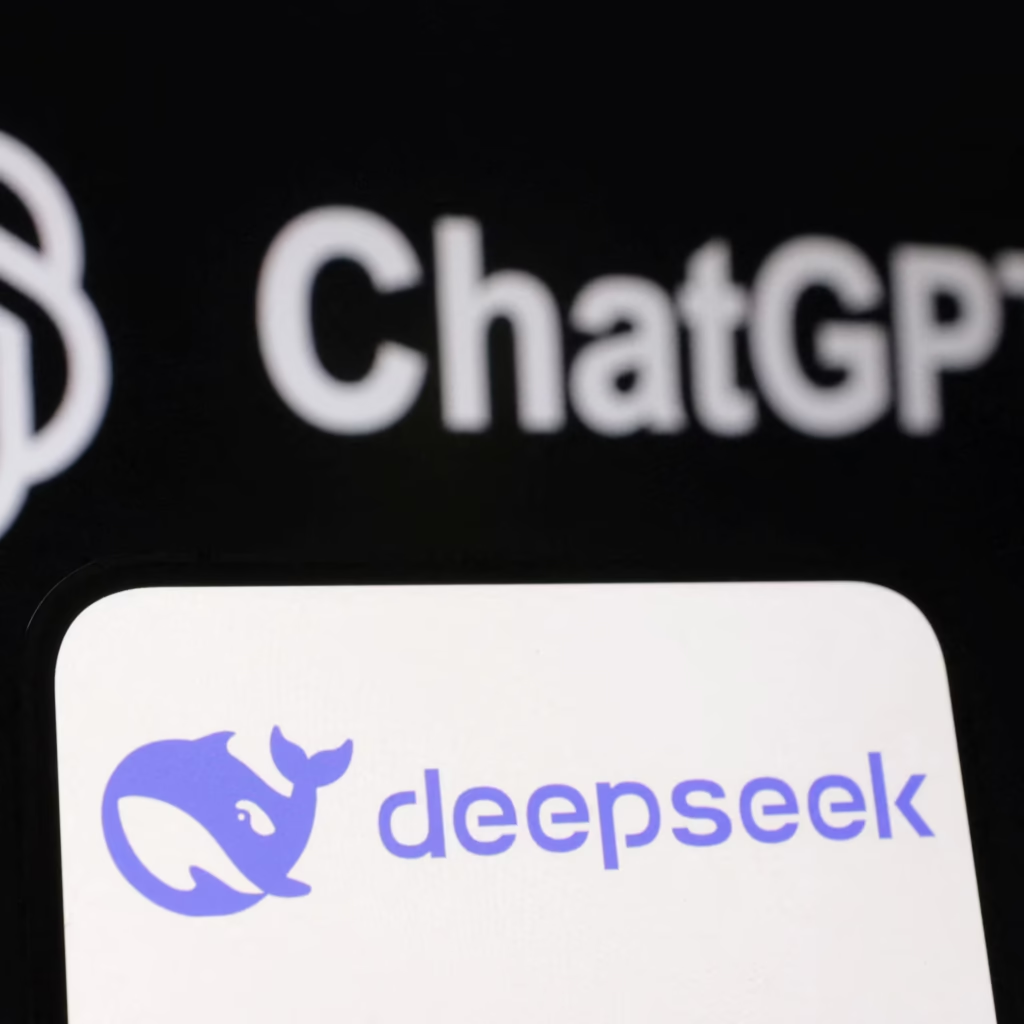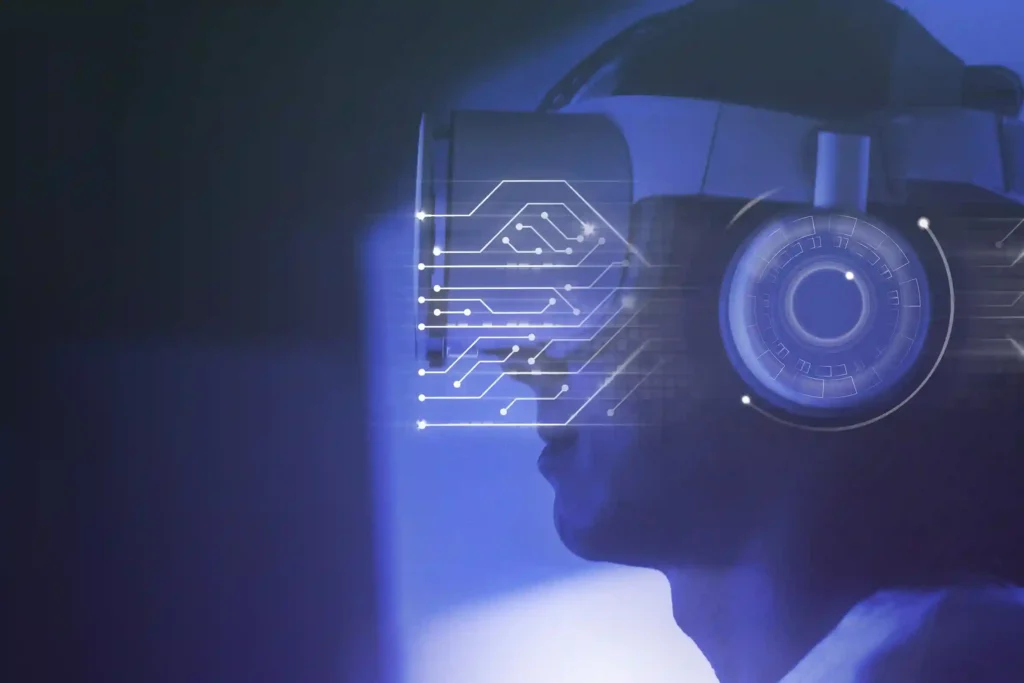Two names have been causing stir in the fast changing field of artificial intelligence: ChatGPT and DeepSeek. 🤖💬 But with the abundance of artificial intelligence choices, how would you determine which one best fits you? Whether your interests are business, technology, or just exploration of AI, using the correct tool may alter your life.
Imagine having an artificial intelligence helper who not only meets your wants but also improves your output and innovation. Which of these innovative artificial intelligence systems—ChatGPT or DeepSeek—can really live up to that expectation? We will delve deeply into a thorough comparison of these two artificial intelligence powerhouses in this blog article, covering all aspect including their ethical issues and language processing capacity. By the conclusion, you will be well-versed in which artificial intelligence best suits your particular requirements and how it may transform your business and interactions with technology.
Table of Contents
Comparative analysis of DeepSeek vs ChatGPT

Essential elements of ChatGPT
Developed by OpenAI, ChatGPT distinguishes itself with remarkable natural language processing capacity. Among its salient characteristics are these:
- Natural conversation: Has human-like exchanges.
- Multi-task ability lets you manage several chores ranging from coding to writing.
- Context awareness: Keeps context all during chats.
- Language support: speaks several languages.
- Constant learning: Often updated with fresh data
Primary strengths of DeepSeek
A more recent artificial intelligence model, DeepSeek presents special features that distinguishes it:
- Expert knowledge: emphasizes certain fields
- Deep study offers detailed understanding of difficult subjects.
- Data processing: deftly manages big data
- Customizing lets one fine-tune for particular applications.
- Integration: Not difficultly connects with current systems
| Feature | ChatGPT | DeepSeek |
|---|---|---|
| General knowledge | Broad | specific expertise |
| Conversation | Natural | Task-oriented |
| Customization | Restricted | Extensive |
| Data handling | Text-based | Large datasets |
Short overview of growth and history
The interesting backgrounds of both artificial intelligence models:
- ChatGPT:
- Created by OpenAI in 2022
- Inspired by GPT (Generative Pre-trained Transformer) design
- Taught on enormous online text resources
- DeepSeek:
- Lately emerged
- Emphasized specific knowledge and deep learning
- Developed with considerations for industry-specific uses
Having discussed the general features of these artificial intelligence models, let’s now explore their language processing capacity to grasp their differences in handling different linguistic chores.
Language Processing Capacity
Natural language intelligibility of ChatGPT
ChatGPT shows amazing grasp of context, tone, and purpose, as well as natural language knowledge. In the field of artificial intelligence language models, its capacity to understand difficult questions and provide cogent answers sets a high benchmark.
DeepSeek’s language producing capacity
DeepSeek generates human-like content in many different fields with amazing linguistic ability. It is a good candidate in AI-driven content production as its output is usually defined by inventiveness and contextual relevance.
Contrast of multilingual assistance
| Feature | ChatGPT | DeepSeek |
|---|---|---|
| Languages supported | 95+ | 100+ |
| Translation quality | High | Very High |
| Idiomatic expression | Good | Excellent |
| Regional dialect understanding | Moderate | Advanced |
While both models provide great multilingual support, DeepSeek stands out with somewhat more languages and more deft handling of regional quirks.
Contextual interpretation accuracy
- ChatGPT:
- Excels in comprehending contextual signals
- stays coherent throughout lengthy talks.
- Sometimes battles with rather vague questions.
- DeepSeek:
- Shows great accuracy in challenging situations.
- Fits quite nicely in changing conversational situations.
- Performs better in domain-specific variants
Although both models show great context interpretation skills, DeepSeek seems to have a minor edge in managing more complex and domain-specific settings. Particularly useful in specialist applications or sectors needing in-depth expertise is this accuracy in comprehending.
Domain of Specialized Knowledge

ChatGPT’s extensive wide knowledge
ChatGPT is a flexible AI assistant for a wide spectrum of issues as it shines in its broad general knowledge. Its exposure to enormous volumes of online material enables it to participate in discussions on everything from history and science to popular culture and current affairs.
| Strengths | Examples |
|---|---|
| Diverse topics | Literature, science, history |
| General problem-solving | Math, logic puzzles, coding |
| Creative tasks | Writing, brainstorming ideas |
DeepSearch’s areas of concentration
DeepSeek, on the other hand, has focused in particular disciplines and provides more in-depth analysis in those areas. Within its main competences, this concentrated method enables more complex and expert-level interactions.
- Natural language handling
- Computer visual vision
- Automotion and robotics
- Forecasting in financial analysis
Applications particular to an industry
The particular expertise of these artificial intelligence models translates into several industry-specific uses:
- ChatGPT:
- Customer service chatbots applied in several sectors
- Media and marketing content development
- Tutorial instruction and clarifications in education
- DeepSeek:
- Modern image recognition for medical diagnosis
- Manufacturing’s predictive maintenance
- Algorithmic financial trading
While DeepSeek’s particular concentration might offer more in-depth answers in its main areas, ChatGPT’s large knowledge base makes it flexible to various situations. The particular demand of the user or company will determine which of the two to utilize.
User Interface and Accessibility
The simple ChatGPT interface
The UI of ChatGPT is meant to be straightforward and appealing. Users using the neat, understated design may quickly enter their questions and get AI-generated answers via a clear chat pane. Important characteristics include:
- Real-time reply creation
- Easy access sidebar for chat history
- Choice to start fresh or carry on current discussions
| Feature | Description |
|---|---|
| Input field | Large, clearly visible text box for user queries |
| Response area | Formatted text display with syntax highlighting |
| Settings menu | Customization options for language model and output |
The layout of DeepSeek
DeepSeek’s more sophisticated interface serves those who need advanced artificial intelligence capability. The structure offers:
- Text, code, and data uploads—many input sources
- Workstation layouts that may be customized
- Thorough control over model parameters
Mobile compatibility
Both systems provide mobile access, although they approach it differently:
- ChatGPT:
- Reactive online design
- iOS and Android specific mobile apps
- Perfect for travel-oriented use
- DeepSeek:
- Web interface suited for mobile devices
- Emphasize important aspects for mobile users.
Coordination with other instruments
The two systems have different capacity for artificial intelligence integration:
- ChatGPT:
- APIs available to developers
- Extended functionality via a plugin ecosystem
- DeepSeek:
- Strong API for integration in businesses
- Support for custom model implementation
After looking at the user interfaces and accessibility tools of both ChatGPT and DeepSeek, let’s now discuss the personalizing and fine-tuning choices accessible for each platform.
Personalization and Refining
ChatGPT’s flexibility in particular jobs
By means of its fine-tuning features, ChatGPT presents remarkable flexibility to many jobs. By including certain instructions or examples, users may personalize the behavior of the model and enable it to fit several writing styles, tones, or specialized knowledge fields.
| Feature | Description |
|---|---|
| Prompt Engineering | Craft detailed prompts to guide ChatGPT’s responses |
| Few-shot Learning | Provide examples to teach ChatGPT new tasks quickly |
| Context Retention | Maintain conversation history for consistent interactions |
Personalisation choices available from DeepSeek
DeepSeek offers a variety of personalizing choices so users may fit the performance of the AI to their own need:
- Unique knowledge bases
- Integration of terminology specific for each domain
- Variable reaction duration and complexity
From technical documentation to creative writing, these tools enable DeepSeek to serve many sectors and use cases.
Using private data for training
Though the approaches are different, ChatGPT and DeepSeek both provide choices for training on private data.
- ChatGPT: OpenAI offers corporate clients fine-tuning APIs.
- DeepSeek provides on-site training space for companies working on sensitive data.
Training on private data improves the AI’s capacity to grasp industry-specific language, follow internal policies, and generate more relevant outputs by means of consistency. Companies with special needs or sensitive data especially benefit from this customizing.
Performance Metrics
Comparisons of response times
Evaluating artificial intelligence language models depends much on reaction time. Let’s contrast DeepSeek with ChatGPT:
| Metric | ChatGPT | DeepSeek |
|---|---|---|
| Average response time | 2-5 seconds | 1-3 seconds |
| Response consistency | High | Moderate |
| Latency under load | Slight increase | Noticeable increase |
DeepSeek is fit for real-time uses as it usually provides faster reaction times. ChatGPT does, however, keep more constant performance over a range of loads.
Reliability ratings
Both models show great accuracy, however in some places there are variations:
- General knowledge queries: ChatGPT ≈ 95%, DeepSeek ≈ 93%
- Specialized domains: ChatGPT ≈ 90%, DeepSeek ≈ 92%
- Multilingual tasks: ChatGPT ≈ 88%, DeepSeek ≈ 85%
Managing challenging questions
ChatGPT and DeepSeek tackle challenging searches differently:
- Multiple-step thinking: ChatGPT shines
- Multidisciplinary questions: DeepSeek exhibits strength.
- While both struggle with vague questions, ChatGPT provides more choices for explanation.
Scalability under strong demand
Both ideas have difficulties when demand rises:
- ChatGPT maintains constant quality by using queuing systems, therefore raising wait times while also preserving
- DeepSeek uses dynamic resource allocation, maybe compromising some accuracy in order to provide quicker replies.
Knowing these performance indicators will enable consumers to select the artificial intelligence most suited for their particular requirements and use cases. We will next discuss the ethical issues and bias-reducing tactics that ChatGPT and DeepSeek use.
Ethical Issues and Minimizing Preference
ChatGPT’s ethical artificial intelligence philosophy
Emphasizing ethical AI development highly, ChatGPT uses many strategies to guarantee responsible application of its technology. The firm behind ChatGPT, OpenAI, has developed a set of values and rules to help to eliminate any biases and advance equity in AI contacts.
- Content filtering lowers negative outputs.
- Regular model upgrades help to raise ethical performance.
- Cooperation with researchers and ethical specialistsDeepSeek’s approach for reducing prejudice
DeepSeek’s approach for reducing prejudice
DeepSeek has developed a series of techniques specifically meant to reduce bias in its artificial intelligence models. Through: the business emphasizes on building a more inclusive and balanced artificial intelligence system by means of:
- Varied training data choosing
- Constant observation and modulating of model outputs
- including comments from several different individuals
| Aspect | ChatGPT | DeepSeek |
|---|---|---|
| Bias detection | Advanced algorithms | User feedback-driven |
| Ethical guidelines | Publicly available | Internal framework |
| Transparency | Regular reports | Limited public disclosure |
Openness in artificial intelligence decision-making
Transparency is crucial in AI decision-making, as ChatGPT and DeepSeek both understand. But their methods are different:
- ChatGPT offers thorough details on the restrictions and possible biases of its model.
- DeepSeek emphasizes on elucidating to consumers the AI reasoning process.
Transparency initiatives by both businesses seek to establish confidence with consumers and stakeholders so that, as needed, AI-driven choices can be easily understood and examined. For both ChatGPT and DeepSeek, the dedication to ethical issues and prejudice avoidance will stay vital as artificial intelligence keeps becoming more important in many different sectors.
Pricing Models and Cost:
The subscription schemes of ChatGPT
To meet various user demands, ChatGPT has a tiered pricing system:
- Free Plan: Basic rights limited
- ChatGPT Plus: $20 a month for upscale tools
- Enterprise Plan: Customized rates for companies
| Plan | Price | Features |
|---|---|---|
| Free | $0 | Basic chat, Limited availability |
| Plus | $20/month | Priority access, Faster responses, New feature access |
| Enterprise | Custom | Tailored solutions, Advanced security, API access |
The pricing policy of DeepSeek
DeepSeek uses a pay-based approach:
- Pay-as-you-go: Token processing determines charges to users
- Discounts in volume: lowered pricing for heavy consumers
- Custom business solutions accessible for broad use
Free as opposed to paid features comparison
In comparing premium versus free features:
- Availability:
- Free: Restricted availability in busy times
- Paid: 24/7 availability
- Response time:
- Free: Consistent reaction times
- Paid: Given top priority, quicker replies
- Model versions:
- Free: Availability of more ancient models
- Paid: Most recent models and revisions
- Customization:
- Free: Either few or none of customizing choices
- Paid: Modern personalization and fine-tuning
After looking at the pricing strategies and cost, let’s now review the help and documentation offered by each systems to guarantee consumers may optimize their artificial intelligence experience.
Help and Documentation
ChatGPT’s tools and community
ChatGPT promises a rich and active community with a lot of tools and help for its members. Users of the OpenAI community forum center their sharing of experiences, inquiries, and project collaboration here. This dynamic ecology promotes invention and problem-solving.
- Formal records
- User-created guides
- Integrations outside of our control
- Frequent conferences and seminars on webinar platforms
| Resource Type | Availability | Quality |
|---|---|---|
| Documentation | Comprehensive | High |
| Community Support | 24/7 | Excellent |
| Video Tutorials | Numerous | Very Good |
Technical help provided by DeepSeek
DeepSeek emphasizes effective issue solving and user pleasure, so it offers strong technical assistance. Though its community might be smaller than ChatGPT’s, the support staff provides individualized help.
- System of dedicated help tickets
- Frequent system upgrades
- Technical basis
- Direct developer access for clients of enterprises
Availability of APD documentation
Although both systems include API documentation, their emphasis differs:
| Feature | ChatGPT API | DeepSeek API |
|---|---|---|
| Comprehensiveness | Extensive | Focused |
| Integration Examples | Numerous | Limited |
| Language Support | Multiple | Specialized |
The API documentation of ChatGPT is renowned for its breadth and depth, therefore addressing a broad spectrum of use cases. Though more specialized, DeepSeek’s API material offers focused knowledge for certain uses.
We will next discuss the future development and upgrades scheduled for both artificial intelligence systems, thereby illuminating your view of their possible expansion and evolution.
Future Development and Updates
the route map of ChatGPT
Future development of ChatGPT is mostly aimed at improving its capacity and extending its uses. OpenAI has highlighted a number of important areas needing work.
- Text, picture, and audio processing combined in multimodal integration
- Improved long-term memory and reasoning help to clarify context.
- Options for customizing let users fit models for certain purposes.
- Improved factual correctness and lessening of hallucinations help to increase dependability.
| Feature | Current Status | Future Goal |
|---|---|---|
| Modalities | Text-based | Text, image, and audio |
| Context | Limited | Extended memory and reasoning |
| Customization | Limited | User-specific fine-tuning |
| Accuracy | Occasional errors | Significantly reduced hallucinations |
DeepSeek’s expected improvements
DeepSeek is working hard on numerous enhancements to challenge ChatGPT:
- Boosting language support
- Improving knowledge particular to a domain
- Enhancing real-time data integration
- Creating even more effective training strategies
Potential business influence
The continuous evolution of these artificial intelligence models is probably going to have broad consequences in several spheres:
- Healthcare: More exact diagnosis and tailored treatment regimens
- Education: Customized courses of instruction and clever tutoring tools
- Finance: Modern risk analysis and fraud prevention
- Customer service: Particularly sympathetic and responsive artificial intelligence helpers
These AI models will transform sectors and redefine human-AI interaction as they keep developing. The rivalry between ChatGPT and DeepSeek will probably inspire creativity, therefore benefiting consumers with more sophisticated and customized AI solutions.
Meeting various user demands and preferences, ChatGPT and DeepSeek provide special strengths in the AI scene. ChatGPT succeeds in generic language processing and accessibility; DeepSeek shines in specific knowledge areas and customizing choices. Though their approaches to ethical issues, pricing policies, and future growth trajectories vary greatly, both artificial intelligence systems show remarkable natural language recognition and generating ability.
Your particular needs will ultimately determine which of ChatGPT and DeepSeek best fits you. When deciding, take into account elements including the difficulty of your work, financial limitations, and the necessity of specialist knowledge. Whichever AI you decide upon, be updated about upgrades and enhancements to make sure your AI-powered projects are using the most current capabilities.



